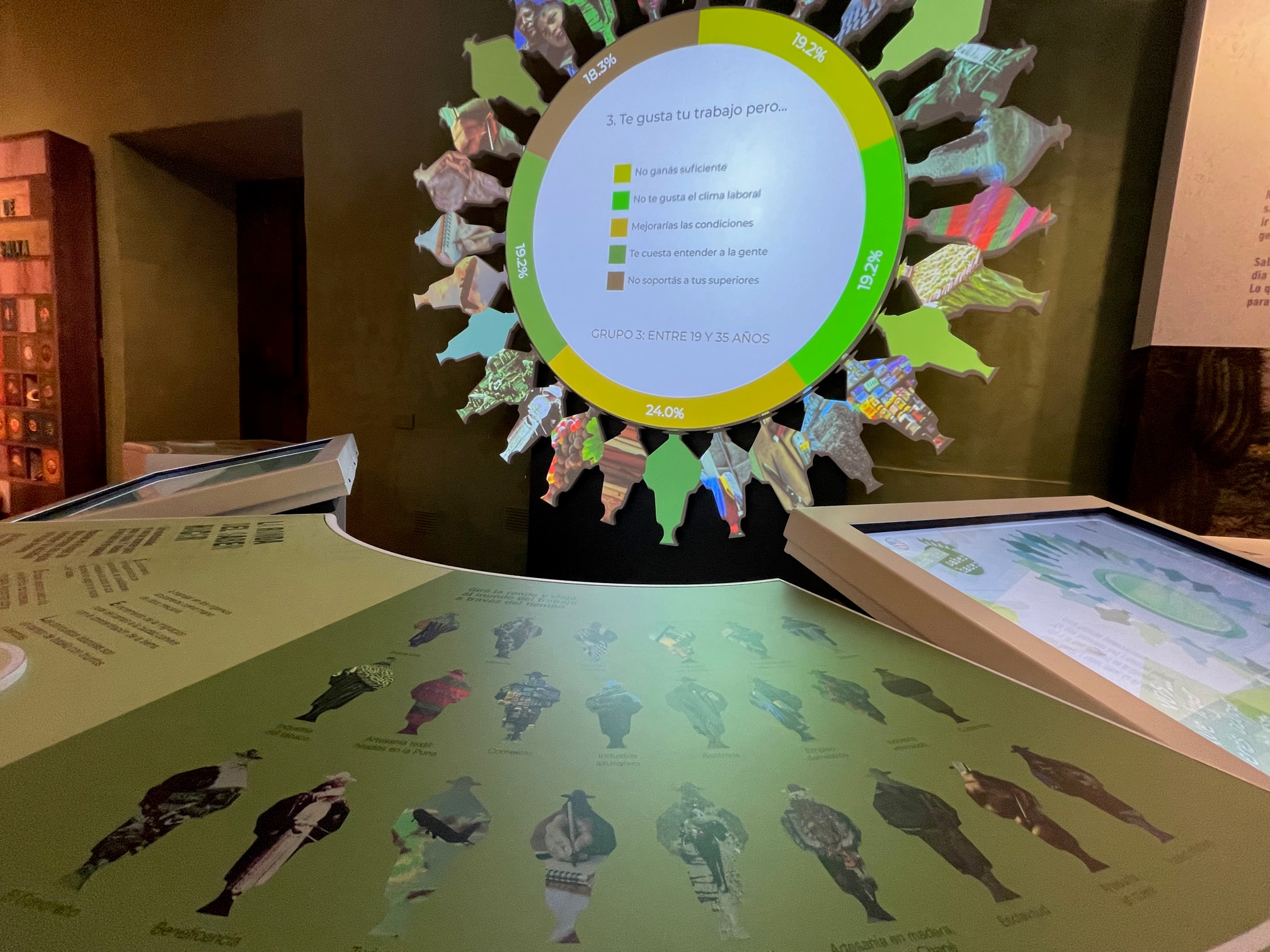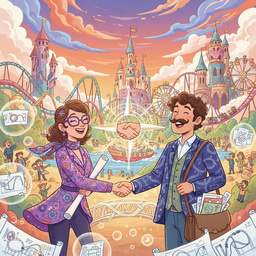Ubiquitous Computing and Ambient Intelligence: Transforming the Experience in Museums

In the digital age, museums have ceased to be spaces solely dedicated to the passive contemplation of cultural objects. The integration of innovative technologies and artificial intelligence (AI) has revolutionized the way visitors interact with these environments, providing more personalized, accessible, and immersive experiences.
Ubiquitous Computing in Museums: An Invisible but Transformative Paradigm
Ubiquitous computing, a concept developed by Mark Weiser, proposes that technology should integrate so seamlessly into the environment that it becomes practically invisible. According to Weiser, the most effective technologies are those that disappear, allowing users to focus on what they want to do rather than on the devices they are using (Sánchez Martelo, 2015).
In modern museums, this principle is clearly reflected. Through the use of sensors, beacons, and other location technologies, museums can personalize each visitor's experience without them even being aware of the presence of these systems. For example, a museum can automatically adjust the content of an exhibition based on the visitor's profile or previous interactions, creating a unique experience tailored to their interests.
Another principle of Weiser, “the best equipment is a silent and invisible servant,” also comes to life in today's museums. Devices like interactive screens and digital kiosks allow visitors to access detailed information without interrupting the flow of their visit. These tools offer multimedia content which enrich the narrative without being intrusive.

Ambient Intelligence: The Evolution of Ubiquitous Computing
Over time, the concept of ubiquitous computing has evolved into what we now refer to as ambient intelligence. This term refers to the integration of technologies that are not only invisible but also intuitively interact with users to enhance their well-being (Fractalia Systems, n.d.).
In the context of museums, ambient intelligence involves creating smart environments that dynamically adapt to visitor behavior. These technologies not only provide relevant content but also improve accessibility, offering personalized options for individuals with special needs. Additionally, they allow interaction in multiple languages, enabling people from different cultures to fully enjoy the experience.
Mobile Devices: The Gateway to Real-Time Interaction
Mobile devices are another key tool in this transformation. Through applications, visitors can interact with museums in real time, accessing personalized audio guides, scanning QR codes for additional information, or following recommended tours based on their visit history. The ability to have museum content in the palm of their hand allows for a much more interactive and participatory experience.
The Benefits of Technological Integration in Museums
The main benefits of integrating smart technologies in museums are:
- Active Interaction: Visitors are no longer mere spectators; they can now interact with exhibits, personalize their experience, and explore hidden details.
- Improved Accessibility: Technology enables museums to tailor their content to meet the needs of visitors with special needs, making them more inclusive.
- Personalized Experiences: Through data collection and behavior analysis, museums can offer tours tailored to each visitor's individual interests.
- Adaptation to New Generations: Audiovisual technologies allow museums to connect with younger generations, who expect dynamic and technologically advanced experiences.
Key to Success: User-Centered Design
For technology to truly enrich the experience in a cultural space, it is essential that its design is user-centered. Museums must ensure that technology serves the narrative and visitor experience, rather than becoming a distraction. The key lies in integrating technology in a way that complements the space and content, enhancing interaction without overwhelming the visitor.
.jpg)
Conclusion
The evolution of technology has profoundly changed the way museums and cultural spaces operate and interact with their audiences. By integrating discreetly and adaptively, these technologies enrich the public's experience and make museums more accessible and attractive to different generations. However, the success of their implementation depends on intelligent design that balances cultural narrative with technology, ensuring a more enriching and meaningful experience for the audience.
References:
Sánchez Martelo, C. A. (2015). La computación ubicua: omnipresencia en los sistemas de información. Tecnura, 19(1), 121-128. https://www.redalyc.org/pdf/2570/257059815010.pdf
Fractalia Systems. (n.d.). Computación ubicua: aplicaciones que mejoran nuestro bienestar. https://fractaliasystems.com/computacion-ubicua-aplicaciones-mejoran-nuestro-bienestar/
-
Xchange Advocates are recognized AV/IT industry thought leaders and influencers. We invite you to connect with them and follow their activity across the community as they offer valuable insights and expertise while advocating for and building awareness of the AV industry.
Recommended Content
AV for Sports Industry in India with Cricket Prospective






Please sign in or register for FREE
If you are a registered user on AVIXA Xchange, please sign in